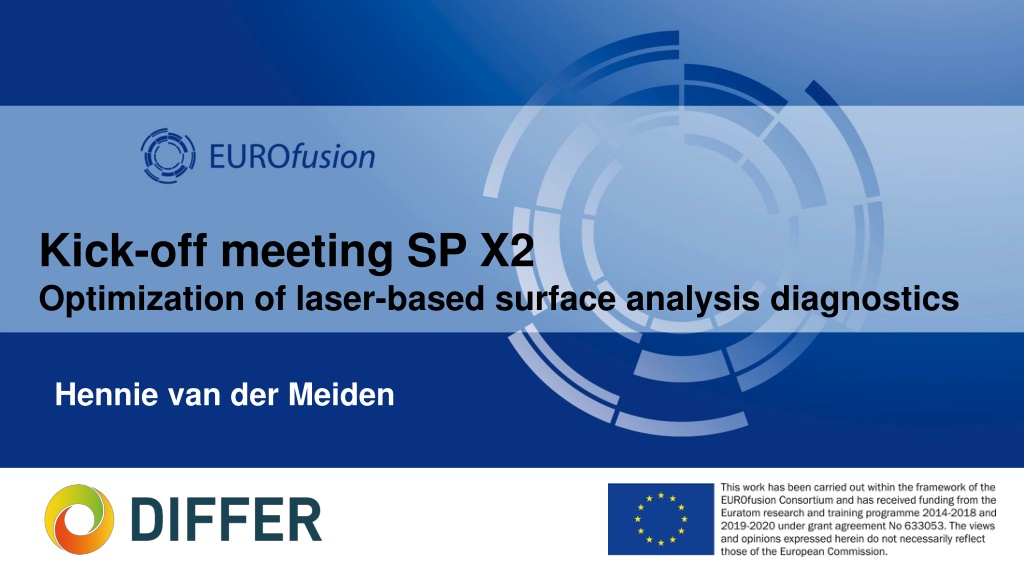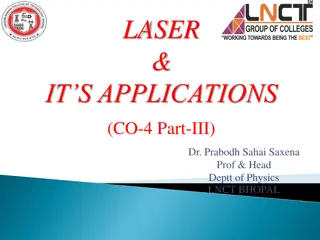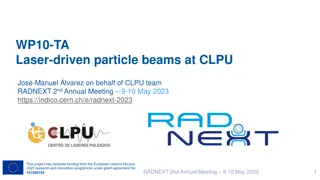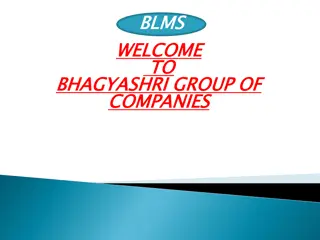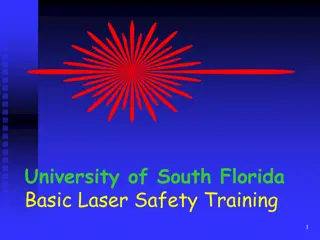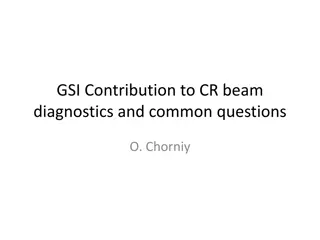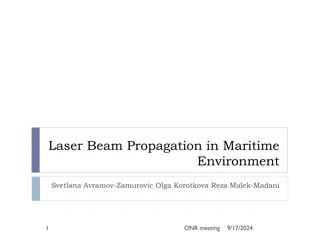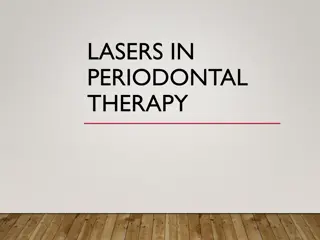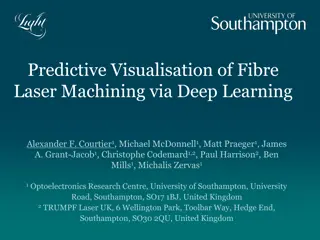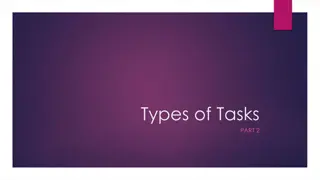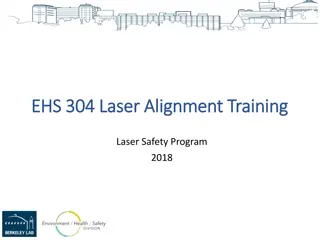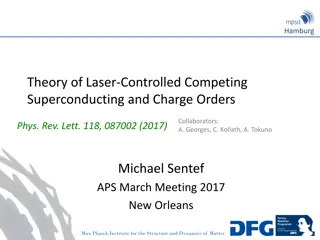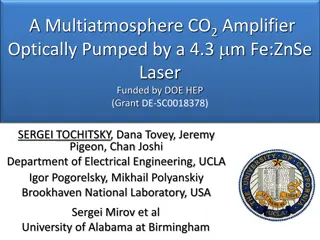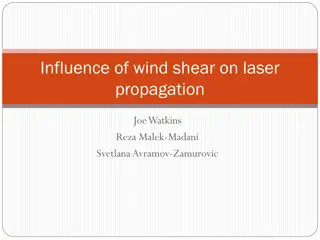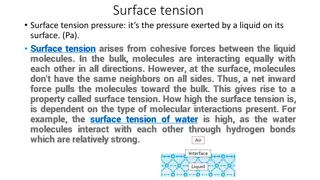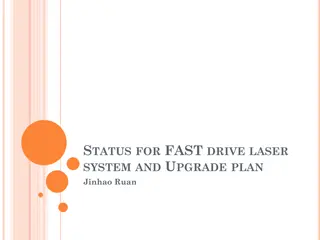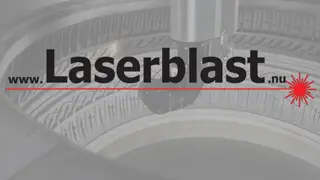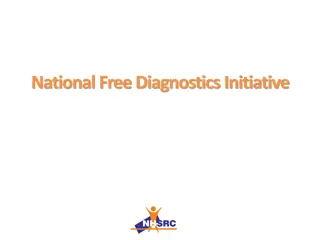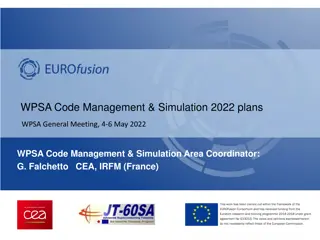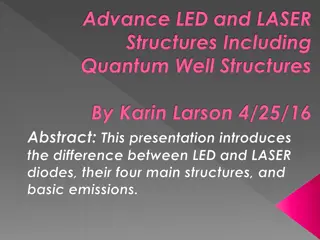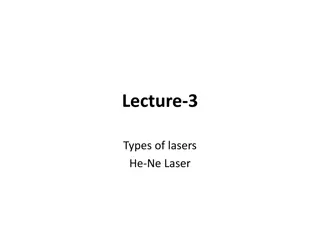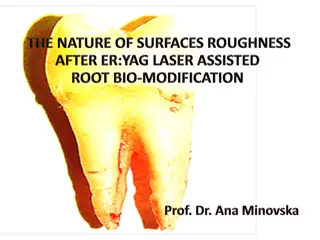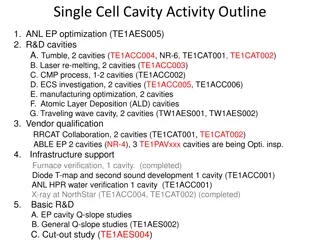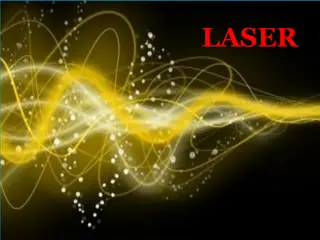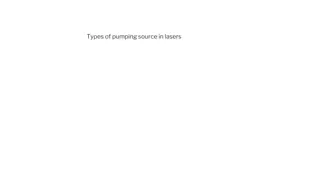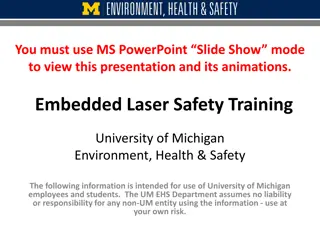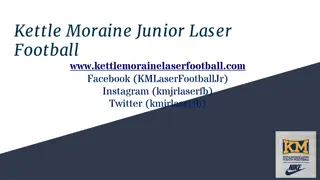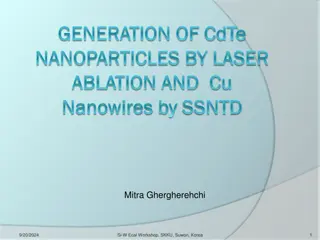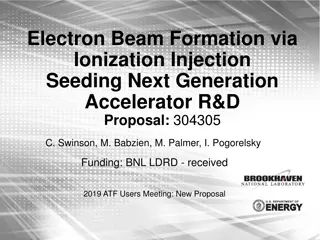Optimization of Laser-Based Surface Analysis Diagnostics for 2021 Tasks
The focus is on optimizing laser-based surface analysis diagnostics, including LIBS development, D-retention monitoring, and absolute quantification of D and composition in various layers. Tasks for 2021 include line separation challenges, depth resolution studies, CF-LIBS improvements, and machine learning analysis. Deliverables involve comparing LIBS methods for material composition, investigating erosion/deposition/fuel retention, and applying machine learning algorithms to enhance CF-LIBS analysis.
Download Presentation

Please find below an Image/Link to download the presentation.
The content on the website is provided AS IS for your information and personal use only. It may not be sold, licensed, or shared on other websites without obtaining consent from the author. Download presentation by click this link. If you encounter any issues during the download, it is possible that the publisher has removed the file from their server.
E N D
Presentation Transcript
Kick-off meeting SP X2 Optimization of laser-based surface analysis diagnostics Hennie van der Meiden
WP PWIE Structure 2021/2022 DPL for ADC: Giuseppe Calabro Coordination Officer in FSD: David Douai Not in 2021
SP X.2: Optimization of laser-based surface analysis diagnostics Where do we stand with LIBS development? D-retention monitoring, with CF-LIBS is accurate up to 100 mbar air. >100 mbar: line distinguishability is difficult. - Better adjustment of detection delay (gate window) is beneficial - DP-LIBS shows good potential for improving line distinguishability: validation for CF-LIBS required AU G challenge: line separation The dependence of ablation depth on retention and surface roughness needs more research.
SP X.2: Optimization of laser-based surface analysis diagnostics Announcements RBS/NRA analysis results 2020 Magnum-LIBS campaign expected this week Magnum and PSI-2 operational Overview paper submitted to NF: no news so far
SP X.2: Optimization of laser-based surface analysis diagnostics Main tasks for this year 2021: Optimized conditions for LIBS in absolute content and depth resolution at pressures up to 1 bar Absolute quantification of D and composition in Be-mixed layers (with depth resolution) Influence of Tsurface and impurities on absolute fuel retention and outgassing values AU G challenge: line separation Influence of retention and surface roughness on depth resolution corresponding samples required Obtain CF-LIBS results for DP-LIBS Improve analysis (machine learning)
SP X.2: Tasks and deliverables 2021 Comparison ps vs. ns LIBS regarding absolute composition and D content in reference and ITER-relevant coatings which can include impurities (FZJ, CU, UT, ISSPUL, CEA) Comparison Single Puls vs. Double Puls LIBS (or alternative LIBS signal enhancement methods) regarding absolute material composition and D content in ITER- and DEMO-relevant W including self-damage W and reference coatings. (FZJ, ENEA, CEA) (CF-) LIBS (ps, ns SP or DP) on samples from different devices (tokamaks or W-7X) (collab. SP B) (ISSP UL, CU, UT, VTT, FZJ, ENEA) Improve CF LIBS analysis by application of machine learning algorithm (IPPLM) (CF-)LIBS on Be containing coatings with different type of fuel content (VTT, UT, CU) CF-LIBS on produced reference samples before and after He loading (FZJ, CU, UT, ENEA) Investigate erosion/deposition/fuel retention (including He) by in situ (CF)-LIBS and NRA/RBS in MAGNUM, LIBS and LIA-QMS/EDX in PSI-2: outgassing, recycling, and role of impurities (O, N), Tsurface, and implantation energy (DIFFER, FZJ, UT) D1: Comparison of ps vs. ns LIBS: abs. content and composition (ISSP UL, CU, UT, VTT, FZJ, NEA) D2: Comparison SP vs. DP LIBS: abs. fuel content in W samples and composition (FZJ, ENEA, CEA) D3: (CF)-LIBS (ps/ns or SP/DP) on samples different toroi. devices: abs. cont. and composition (in depth) (ISSP UL, CU, UT, VTT, FZJ, ENEA) D4: Report on CF-LIBS analysis by application of machine learning algorithm (IPPLM) D5: Analysis of Be containing coatings with (CF)-LIBS: absolute content and composition (VTT, UT, CU) D6: (CF)-LIBS results He loaded samples and surface modifications D7: Reference measurements of outgassing, recycling, and retention after D plasma loading: absolute content and composition in W and reference samples (DIFFER, FZJ, UT)
Work Package Milestones in 2021 (part II) WM11 Provision of atomic, molecular and surface data necessary to model impurity migration. Main focus is on ionisation, excitation, reflection and sputtering data for W materials including morphology effects and crystal orientation (DEMO+ITER) 31.12.2021 WM13 Realization of diagnostics for determination of ro-vibrational distribution of the ground state of H2 and D2 and atomic densities in PSI-2 and MAGNUM-PSI to provide access to neutral particle properties under ITER and DEMO conditions (ITER+DEMO) 31.12.2021 WM14 Determination of the role of material composition and surface roughness on the laser-induced ablation rate and its conversion into depth- resolved information about material composition and fuel content in ITER-like materials and surface layers or co-deposits (ITER) 31.12.2021 WM15 Quantification of the energetic neutral contribution in Ion and Electron Cyclotron Wall Conditioning in TOMAS and qualification of its impact on fuel removal from W7-X PFCs (DEMO+ITER) 31.12.2021 Sebastijan Brezinsek | PB PWIE 2021 | Zoom| 22.06.2021 | Page 7
